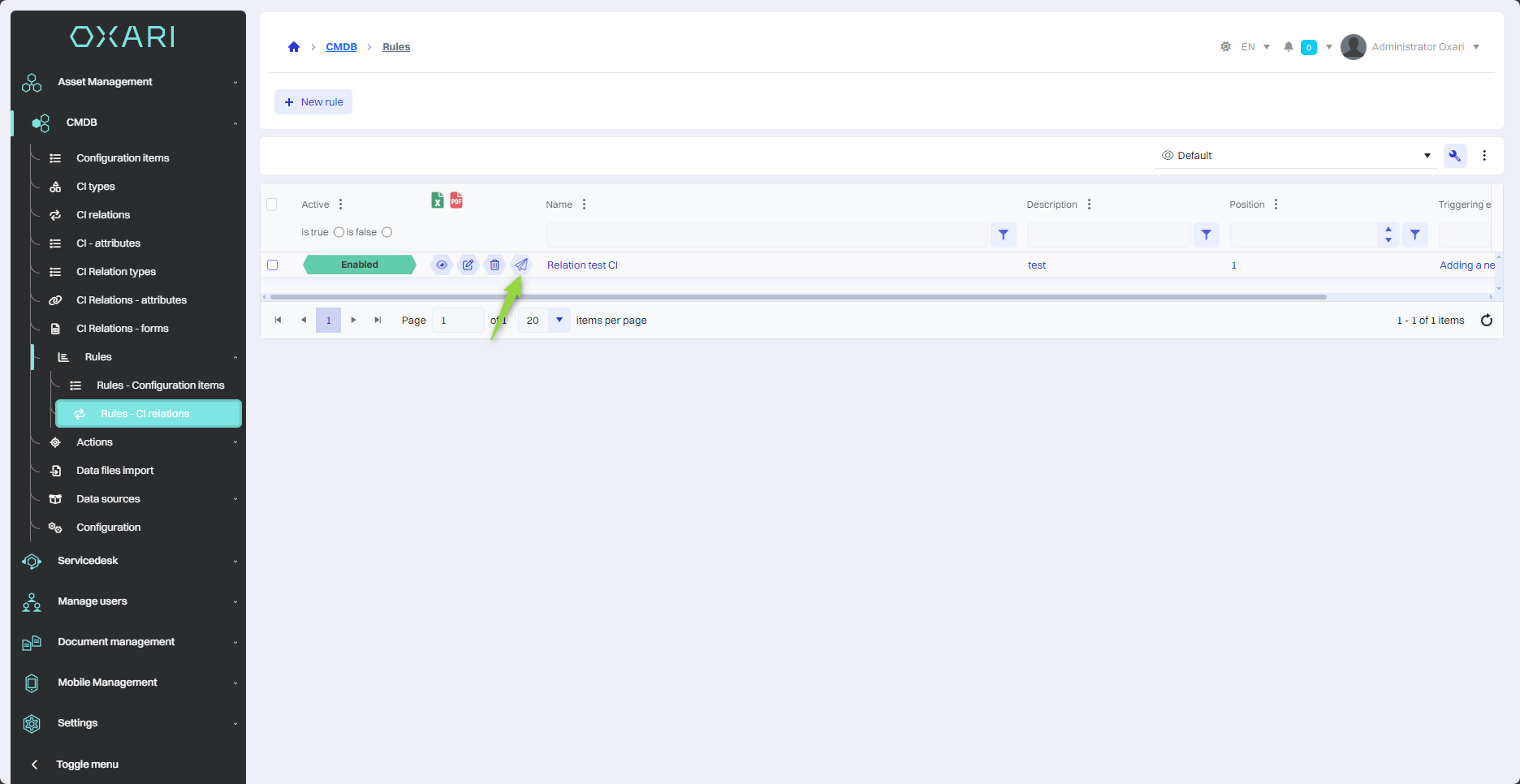Rules - CI relations
Rules - CI relations are used to automate the processes of managing the relations between different Configuration Items (CI) in the system. These rules allow certain actions to be triggered automatically when defined CI relation events occur. Actions can be very diverse and are available under CMDB > Actions - CI relations, allowing for efficient and automated management of dependencies in the IT infrastructure.
More about configuration items: Go >
More about actions: Go >
It is crucial to design rules that are simple and thoughtful, with unambiguous names indicating their function or use. It's also important to describe each rule in detail to make it easy to understand its purpose and operation, which provides transparency and management efficiency, and makes the IT team's job easier.
New rule
To add a new rule, go to CMDB > Rules - CI relations, and then click the “New rule” button.

Filling in the rule
Next, in the “New rule definition” window, fill in the desired fields and click the “Save” button.
| 1 | Rule activation - Checking the “Active” option activates the rule. |
| 2 | Name - This is used to identify the rule. |
| 3 | Description - Allows you to understand the purpose of the rule. |
| 4 | Trigger event - Select the event that will trigger the rule, for example, “Add new CI relationship” (Optional). |
| 5 | Schedule(s) - Specify when the rule should be activated (Optional). More regarding schedules: Go > |
| 6 | Position - Specify the order of rule execution if there are more rules. |
| 7 | Starting rule - Optional setting of the rule to be the trigger for the current rule. |

Specifying the rule action/condition
After creating a rule, the user will be taken to the rule creation window. Rules in Oxari work on an “if-then” basis, where certain conditions (if) trigger certain actions (this). In this case, the triggering event is “Register new service.” To assign an action or condition to the event, click on the tile in question.
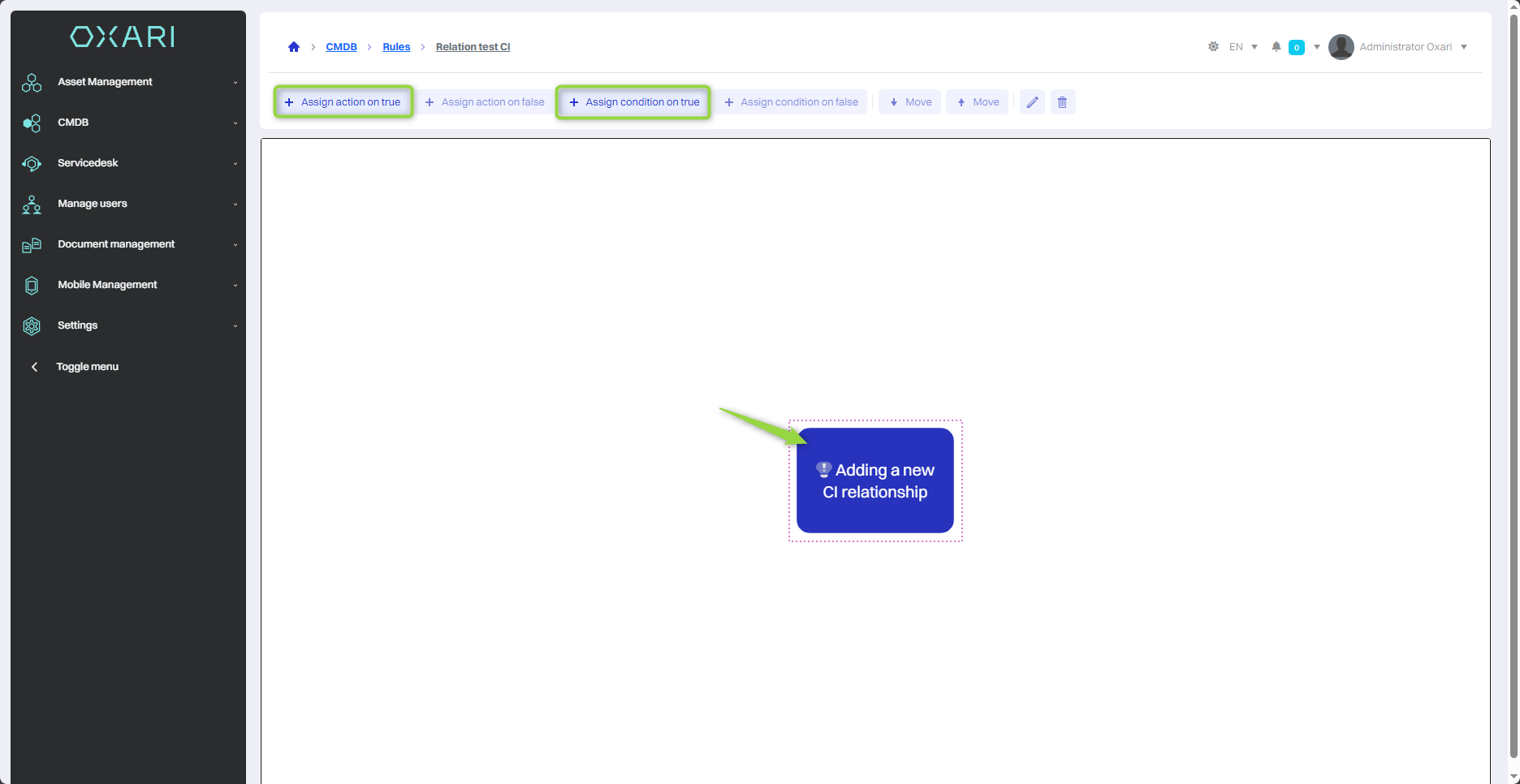
Assigning a condition
After clicking on the tile, two options will be usable “Assign action for TRUE” and “Assign condition for TRUE”. To add a condition to a rule, click the “Assign condition for TRUE” button.

Next, in the “Select condition type” window, the user has a choice to specify conditions for the newly created rule. In the “New” field, you can choose the criterion by which the rule will be applied, to select “Date difference” and “CI relation type”.

Next, the “New condition” window contains:
| 1 | A field for entering the name of the new condition. |
| 2 | A drop-down menu with the “contains” option, so that the condition can be specified on the type of CI relationship. |
| 3 | Field for entering the condition (CI relationship type contains uses ↔︎ is used by) which means that the condition will work when the CI relationship type is “uses ↔︎ is used by”. |
You should, fill in the fields, and then click the “Save” button.

A given condition has been created, and both actions and subsequent conditions can be assigned to it in the Oxari system. These actions and conditions are designated to be executed when the original condition is met (TRUE), as well as to be executed when the condition is not met (FALSE).

Assigning an action
In the example in question, when the condition “CI relationship type contains uses ↔︎ is used by” is satisfied, to assign an action to it, click on the condition tile and then select “Assign action for TRUE”.
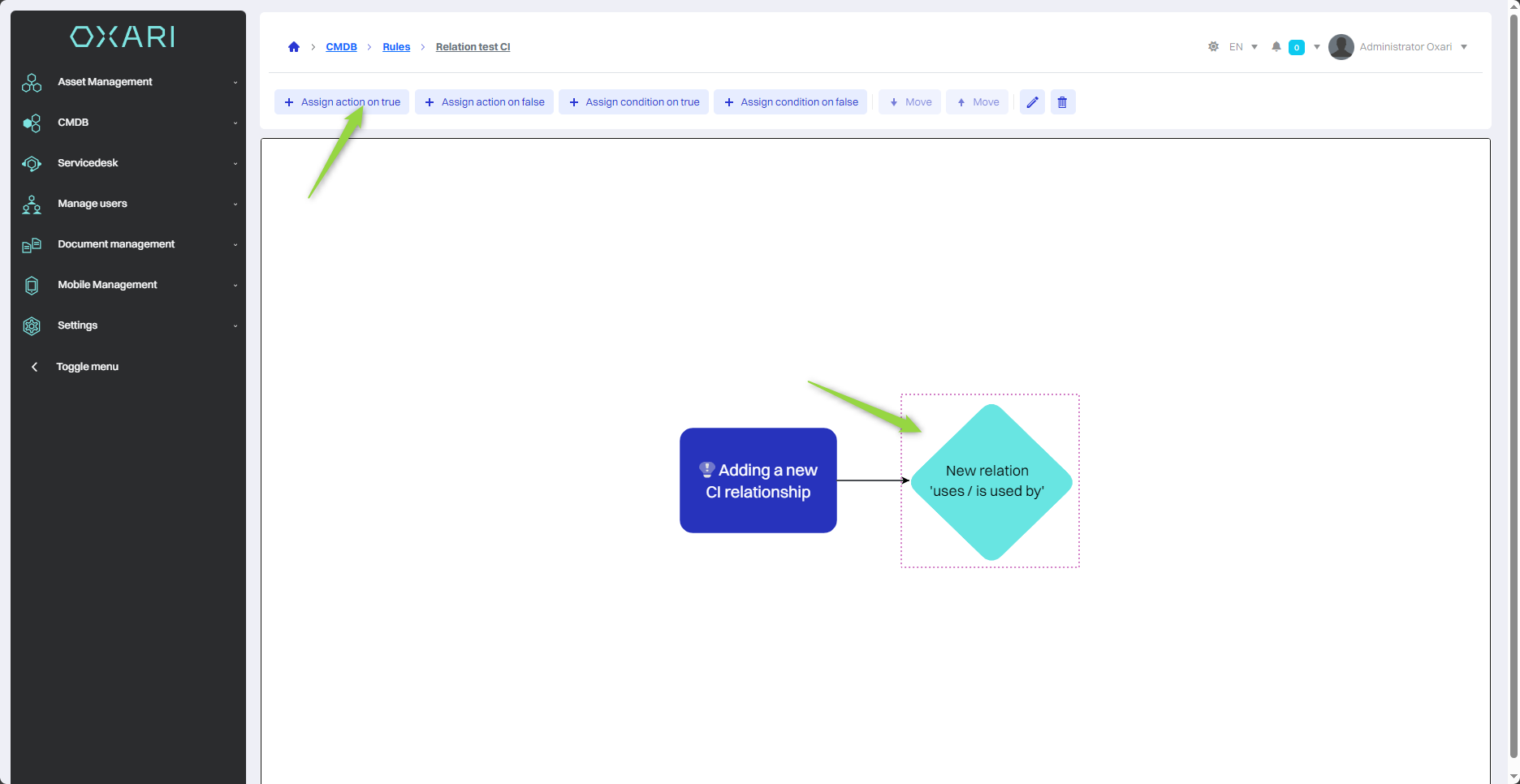
In the process of defining rules in the Oxari system, after creating a condition, the user can proceed to assign an action. There are two options available:
| 1 | “New” - Allows you to create a new action that will be executed when the condition is met. |
| 2 | “Search” - Allows you to select actions that have already been defined in the CMDB > Actions - CI Relationships section. More about actions: Go > |
In the example under discussion, a new action is created. To create a new action, the user should select “New” and proceed to the process of configuring this action.
In the example in question, a new action is created. To create a new action, the user should select the “New” option and proceed to the process of configuring this action.

Then, in the “Select action” window, select the desired action and click the “Select” button.
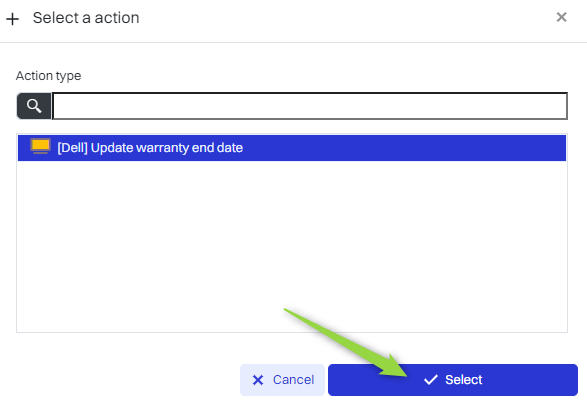
In this step, name the action and click the “Save” button.

The given action has been added to the rule. It may happen that it is not immediately visible, in which case you should refresh the page.
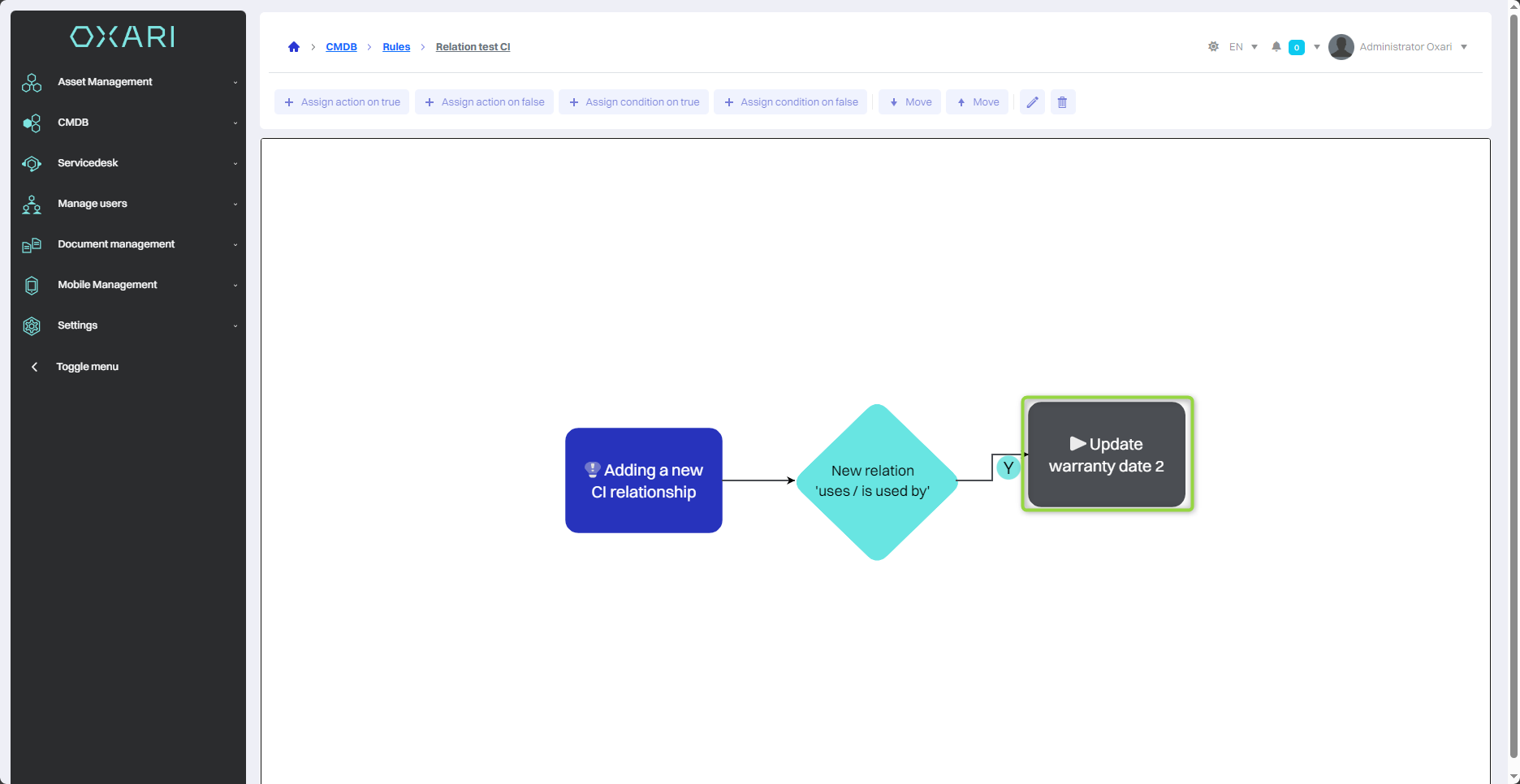
Once a new action is created, it becomes available in the CMDB > Actions - CI relations section and can be reused in various rules. To use an already existing action, in the “Assign Action” window, simply select “Search”, find the desired action in the list and confirm the selection by clicking “Save”. This allows you to effectively use the action in different scenarios without having to create it again.
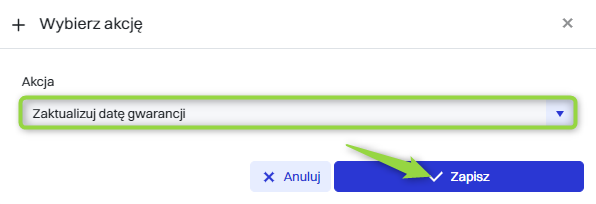
Editing/deleting actions and conditions
To edit or delete actions and conditions, simply go to CMDB > Rules - CI relations. Then, to see more options for a rule, click the “Details” button next to the selected rule.
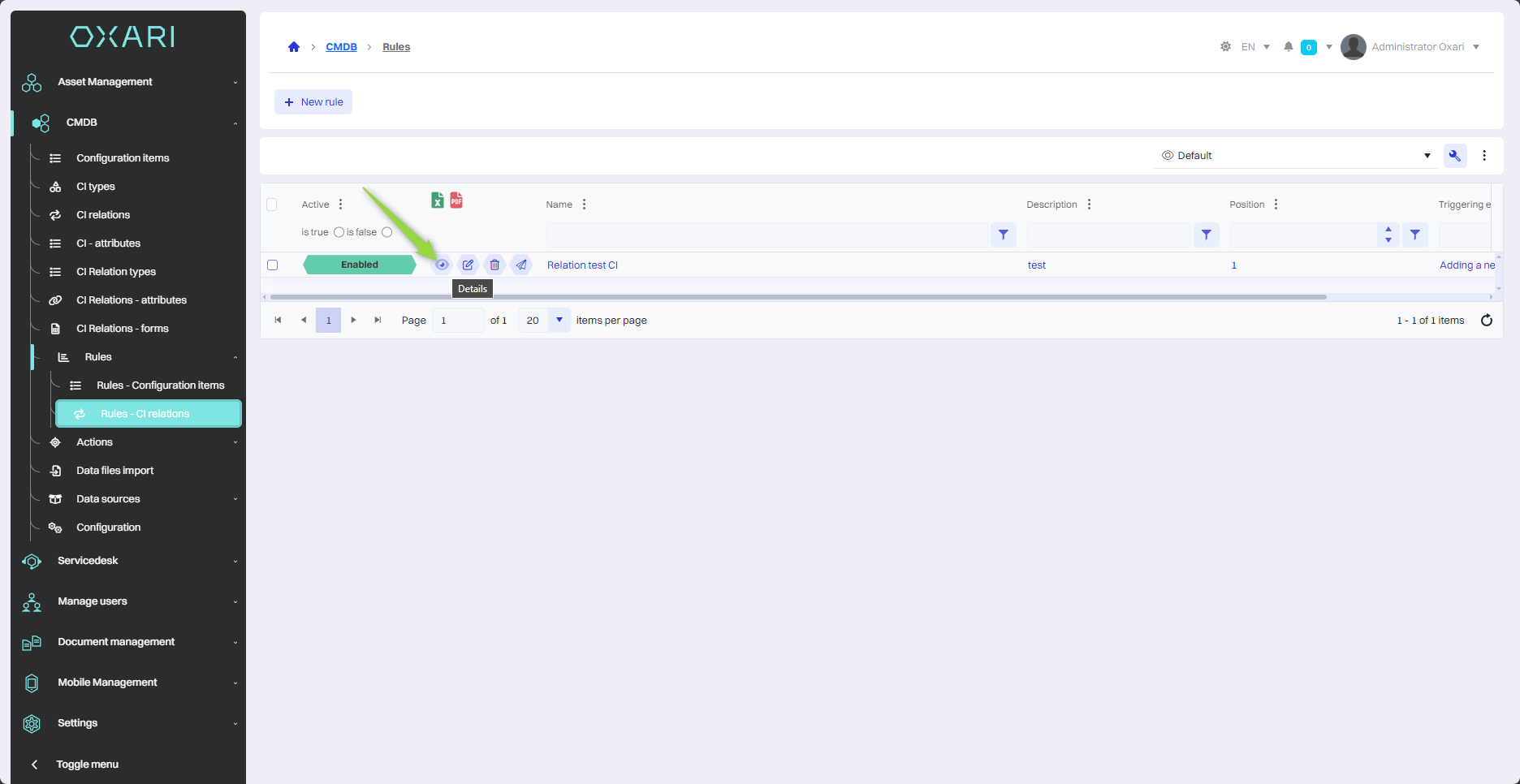
In the details of the rule, select the desired action/condition by clicking on the tile of the corresponding action/condition. The edit/delete options will be visible in the upper right corner.
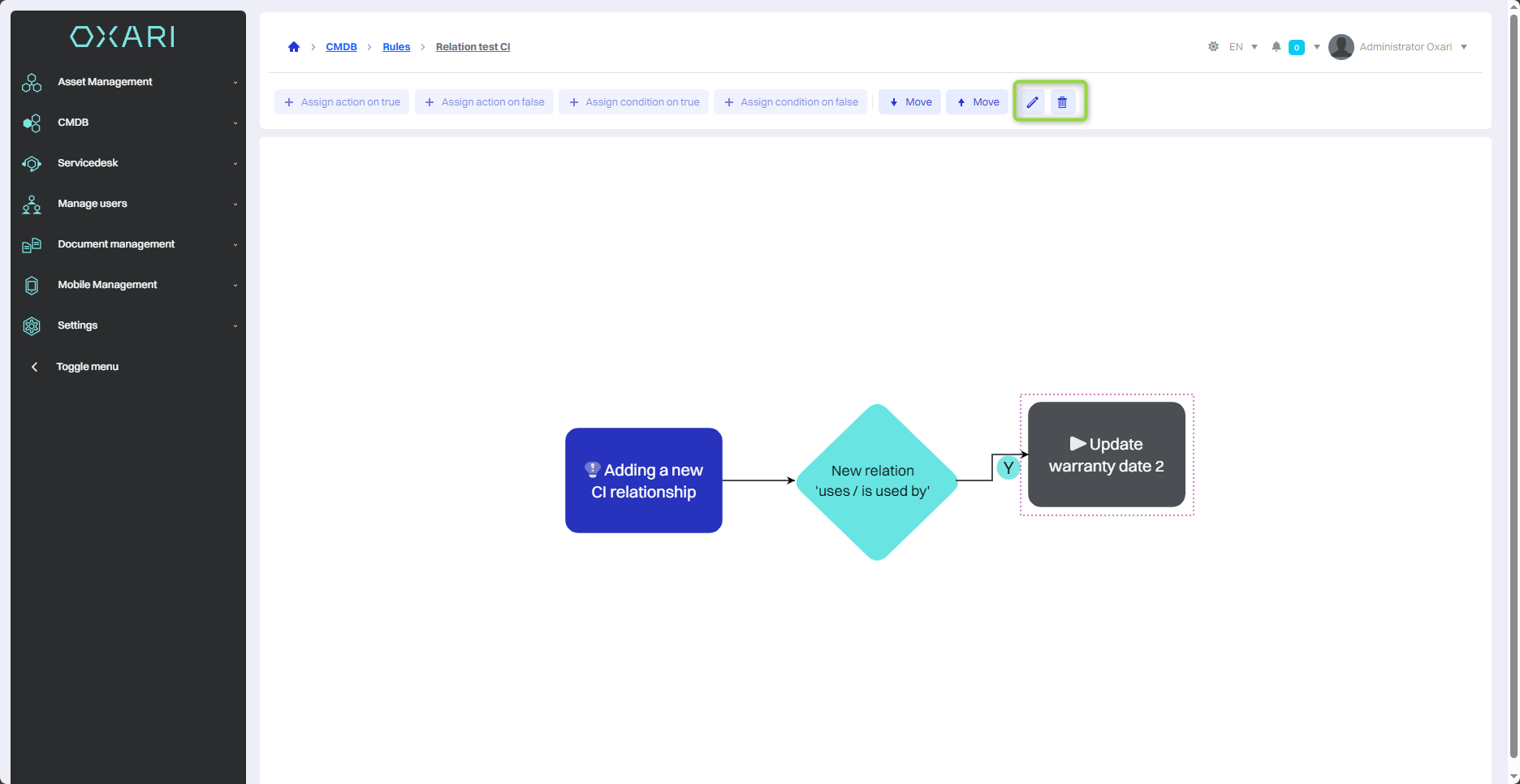
Editing/deleting a rule
To edit or delete rules, go to CMDB > Rules - CI relations. Hover over the desired rule. The edit/delete buttons will be displayed.
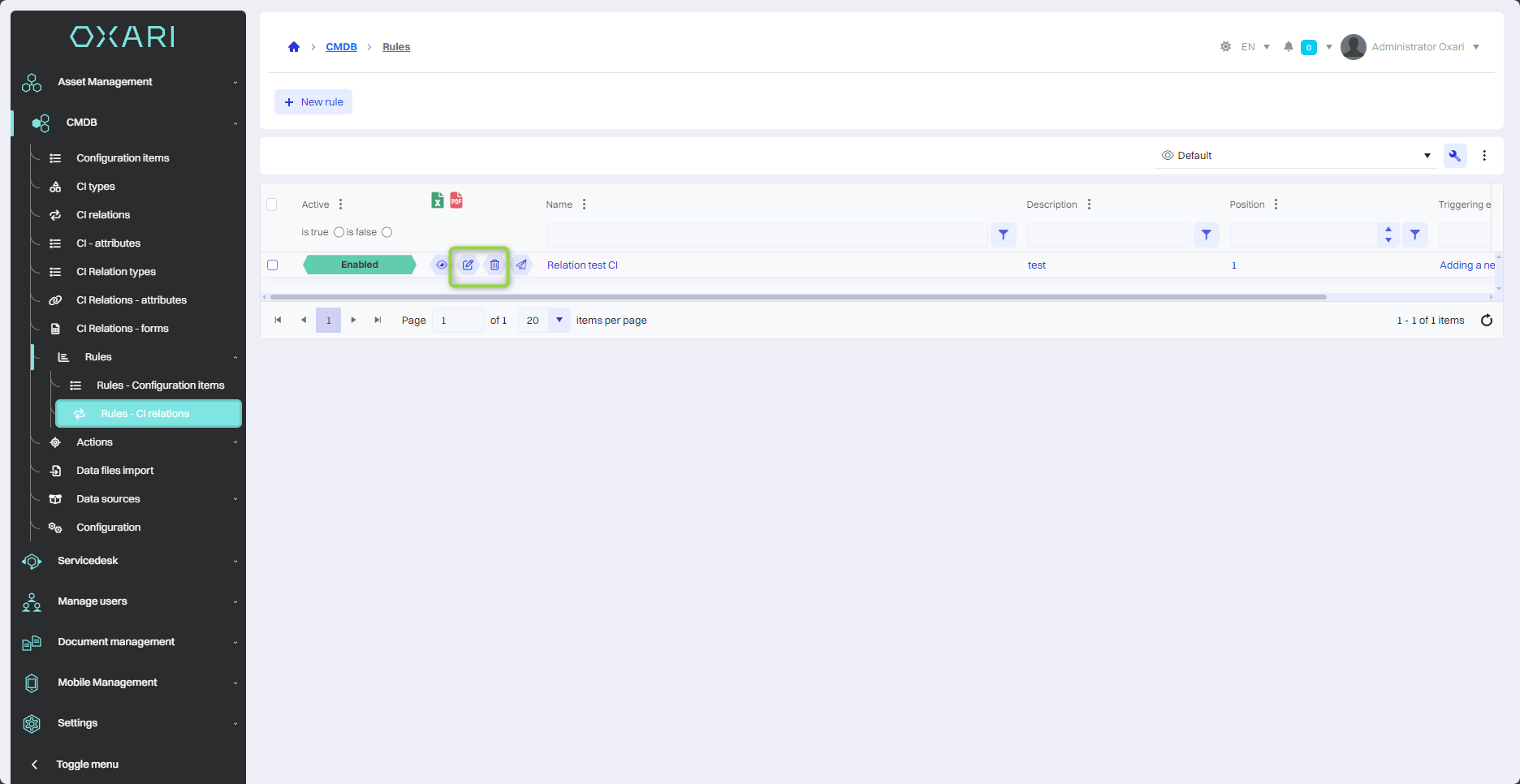
Activating/Deactivating a rule
Each rule can be activated or deactivated. To activate/deactivate a rule, go to CMDB > Rules - CI relations. Hover over the desired rule and click the edit button.

Then, in the edit window, click on the “Active” checkbox (the checked box means that the rule will be Active), finally click the “Save” button.

Testing a rule
To test rules, go to CMDB > Rules - CI relations. Hover over the desired rule. A button to perform the test is displayed.
Only rules with an assigned schedule can be tested.
